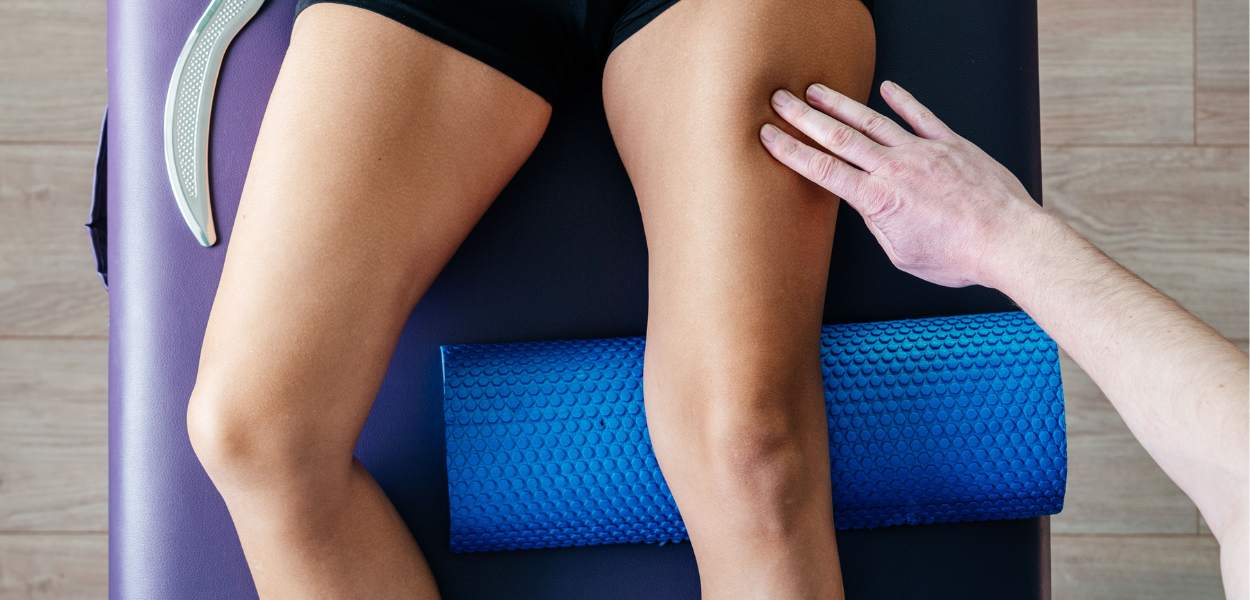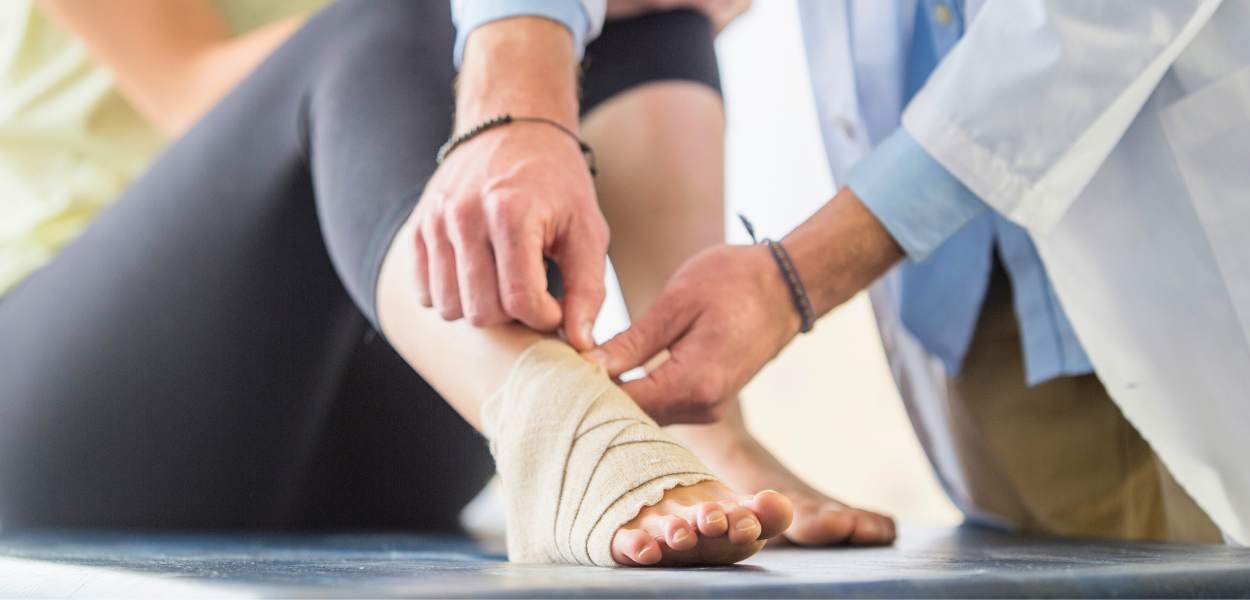The Best Sitting Posture to Prevent Back Pain

What is the best sitting posture? As physiotherapists, this is a common question that our clients ask us all the time. In truth, there is no simple answer to this question. However, there is always a better way to sit or stand, along with a few other factors that we need to consider. In this article, we share the best practices and tips you can make to improve your sitting posture and promote good back health.
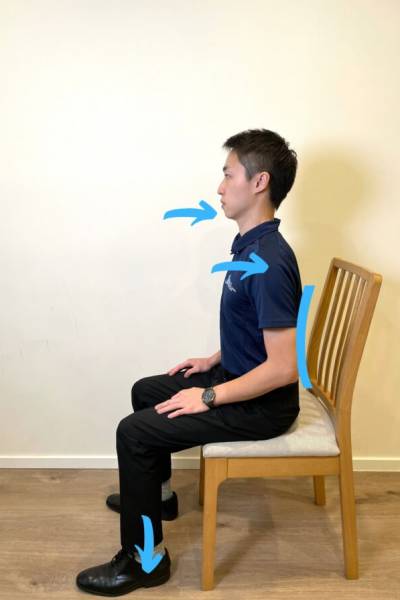
First of all, I often tell my clients “the best posture is your next posture”. We need to understand that if we stay in one position for too long, we will become stiff in that particular position. For example, if we stand for too long in one position without moving, our muscles that hold us in that position will become fatigued and our joints may be stressed if they are held in the end range position for prolonged periods. Therefore, we may still experience aches and pains if we are stuck in one position for too long.
Okay… so what really is the best posture? A good posture requires us to make sure that all parts of our body are being supported and stay in a relatively stress free position. A picture is worth a thousand words, so please refer to the picture above.
Points to consider for good sitting posture
Here are a few key points for you to consider:
- Tuck in your chin and hold your head up
- Keep your chest up
- Keep a natural curve in the lower back
- Have your feet fully supported on the ground
Even with better or improved postures, clients still often complain that they are not able to stay in that position for long. This comes down to the strength of the muscles that are supporting us in this position.
Here are a few useful exercises that you can perform to improve postural strength:
1. Chin Tuck
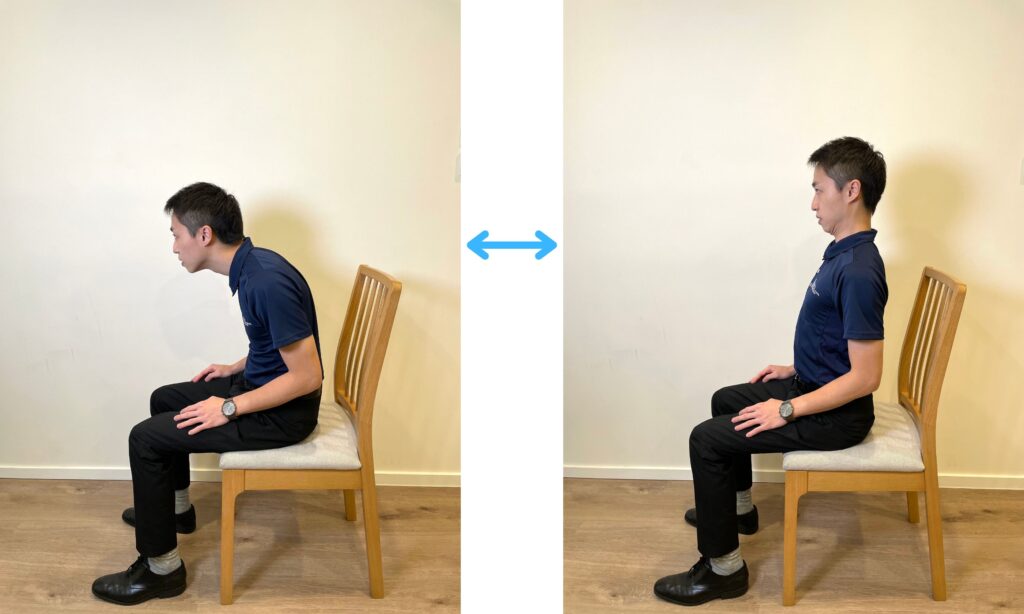
Step 1: Poke your chin out then tuck it back in. Repeat 10 times.
2. Shoulder Retraction
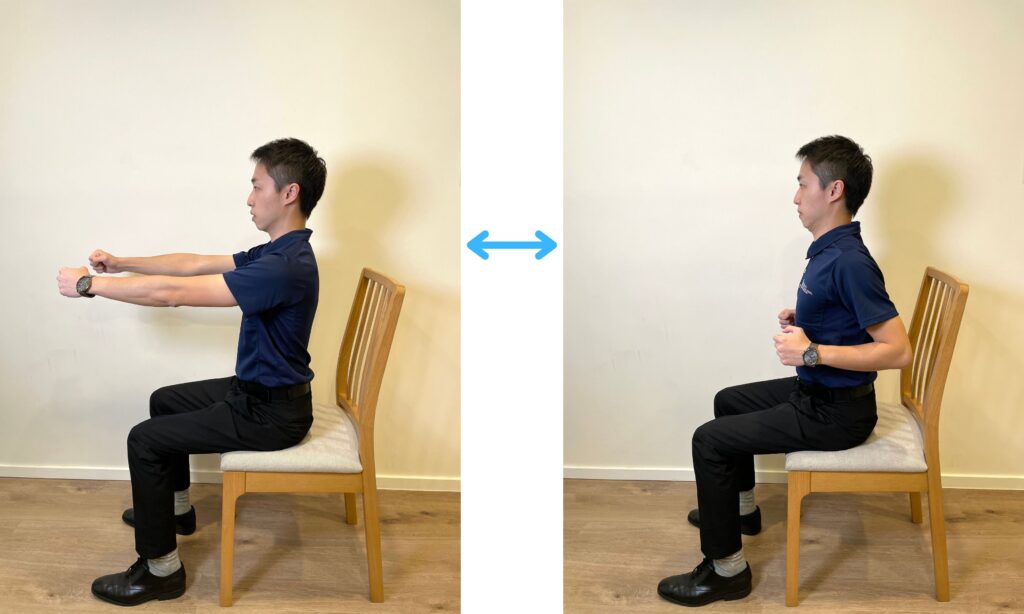
Step 2: Bring your arms forward then retract your shoulders and arms. Repeat 10 times.
3. Pelvic Tilting
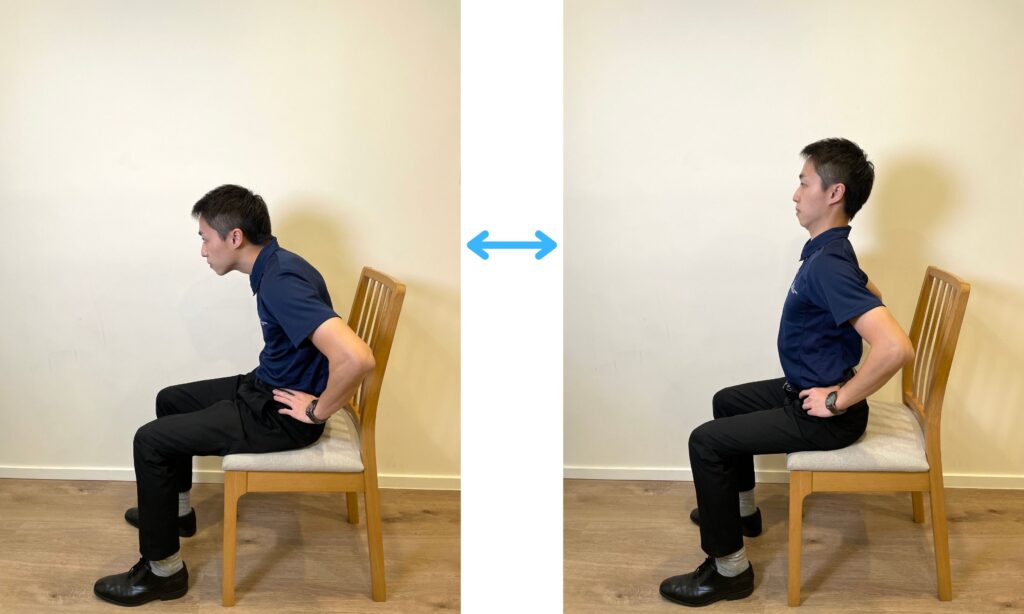
Step 3: Tilt your pelvis forward then backward. Repeat 10 times.
You should repeat these movements 10 times and perform 2 sets. You can perform these exercises 2-3 times per day or whenever you feel tight and sore from sitting for too long.
Last but not least, we need to consider if we have any pre-existing concerns in our body, like lower back conditions or neck and upper back weakness. If you do, I would strongly recommend that you consult your physiotherapist to have these concerns addressed and resolved before trying to achieve “a better posture”.
Be careful! Pre-existing conditions in the body may not only stop us from achieving a BETTER posture, but it may even cause additional symptoms after, so make sure you are suited to perform these exercises before doing them.
If you would like to know more about these exercises in detail, please consult our Physiotherapists at Prohealth Sports and Spinal Physiotherapy Centre.
Written by

Gary Ng
Registered Physiotherapist | Bachelor of Applied Science in Physiotherapy
Stationed at our Wellington Street Branch, Gary is a skilled and passionate physiotherapist. He enjoys outdoor activities in his free time, including hiking, surfing and tree top trekking. Gary started his physio journey at the age of 15 when he experienced lower back pain during sports training, and he has been especially passionate about treating lower back and spinal pain issues ever since. Gary’s special interest is working with athletes to help them recover, especially in trigger point release and joint mobilisation. Read more about Gary on his bio.
Get more personalised advice by booking a session with Gary.




